How to Create a CRUD Application with Svelte?
In this walkthrough, you'll learn how to build a complete CRUD (create, read, update, delete) app using Svelte.
We’ll utilize Back4app as our backend platform, which offers a robust low-code backend to manage your app’s data.
This guide explains how to set up a Back4app project, design a versatile data schema, and implement CRUD operations within a Svelte application.
Initially, you will create a Back4app project titled Basic-CRUD-App-Svelte. This project forms the basis of your backend setup, where you'll define your data schema either manually or with the help of Back4app’s integrated AI Agent.
Next, you'll explore the Back4app Admin App—a user-friendly interface for data management—allowing you to easily perform CRUD operations.
Finally, you will connect your Svelte application to Back4app, making use of either the Parse JavaScript SDK or direct REST/GraphQL API calls, while ensuring secure data handling.
By the end of this tutorial, you’ll have a fully functional Svelte application that performs basic CRUD tasks along with secure user authentication.
- How to set up a Svelte-based CRUD application with a flexible backend.
- Methods to organize your backend and connect it to your Svelte app.
- How to leverage the Back4app Admin App for seamless data operations.
- Strategies for deploying your Svelte application, including Docker containerization.
Before you begin, ensure you have:
- A Svelte development setup. You can use a code editor like VSCode and ensure Node.js is installed.
- Basic familiarity with Svelte, JavaScript, and REST APIs. Review the Svelte documentation if needed.
- Log into your Back4app account.
- Hit the “New App” button on your dashboard.
- Name your project: Basic-CRUD-App-Svelte and follow the on-screen instructions to complete the setup.
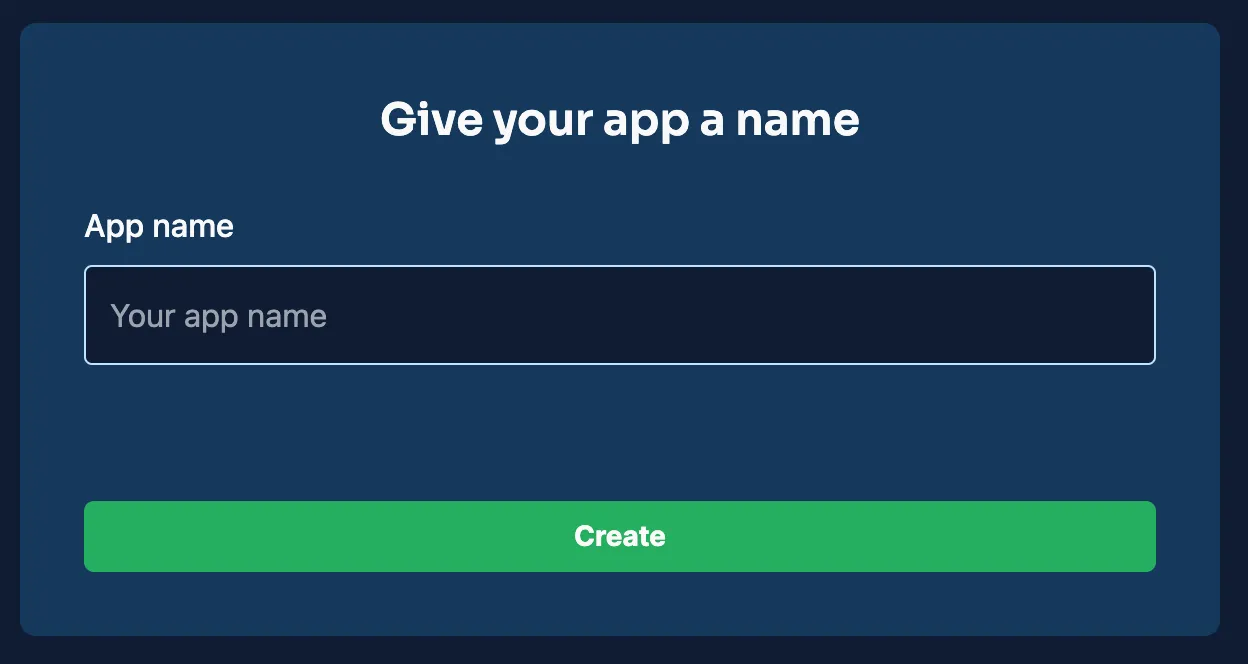
After creating your project, you’ll see it on your dashboard, which serves as the foundation for configuring your backend.
For this CRUD application, you need to define a few collections in your Back4app project. Below are examples of the key collections and fields necessary to support your Svelte CRUD operations.
This collection stores information for each item.
Field | Type | Details |
|---|---|---|
_id | ObjectId | Auto-generated unique identifier. |
title | String | Name or title of the item. |
description | String | Brief description of the item. |
createdAt | Date | Timestamp when the item was created. |
updatedAt | Date | Timestamp for the last update to the item. |
This collection manages user credentials and authentication details.
Field | Type | Details |
|---|---|---|
_id | ObjectId | Auto-generated unique identifier. |
username | String | Unique username for each user. |
String | User’s email address. | |
passwordHash | String | Encrypted password for authentication. |
createdAt | Date | Account creation timestamp. |
updatedAt | Date | Timestamp for the last account update. |
You can create these collections and define fields directly from your Back4app dashboard.
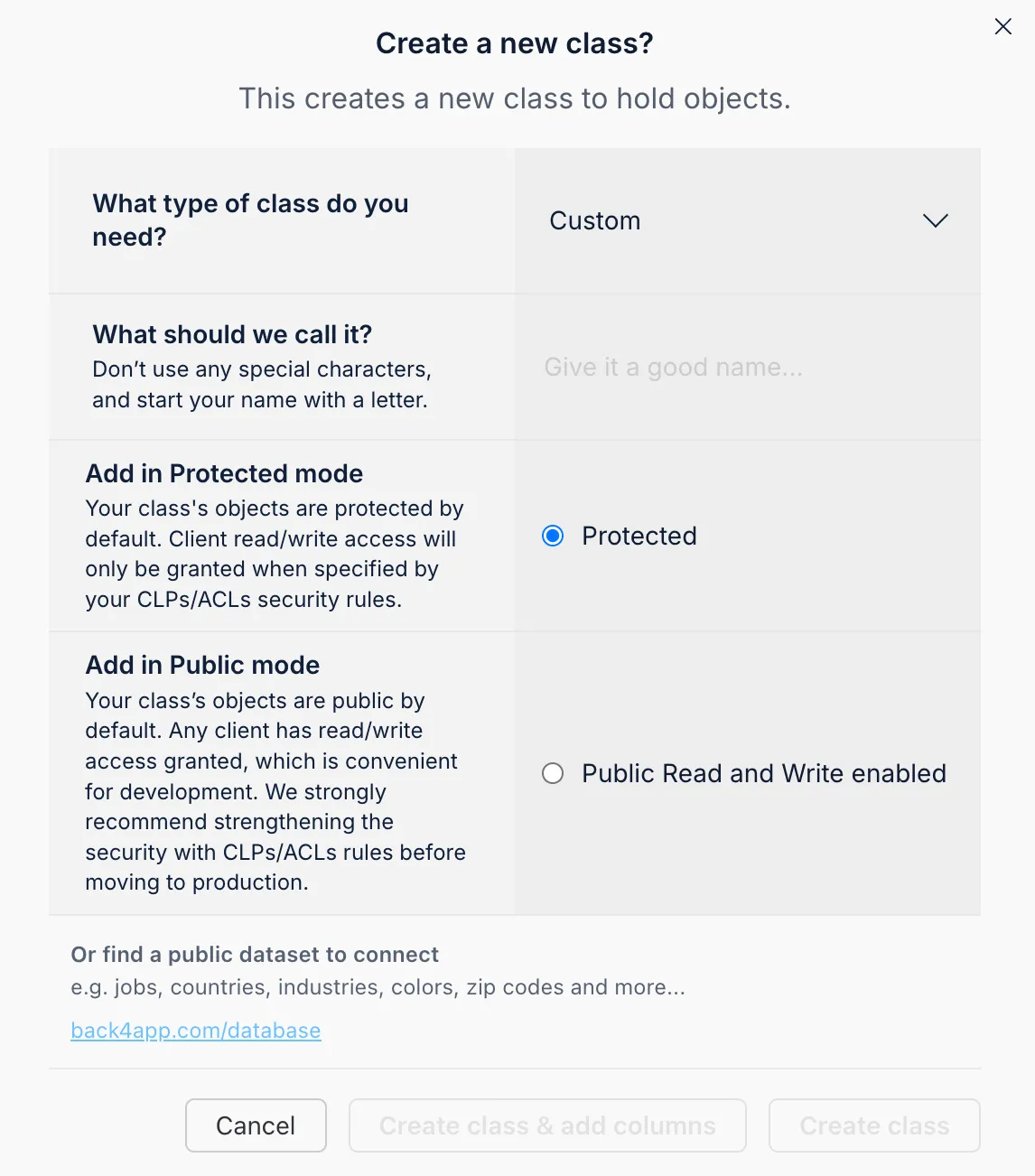
You can add fields by choosing the appropriate type, naming the field, setting default values, and marking it as required.
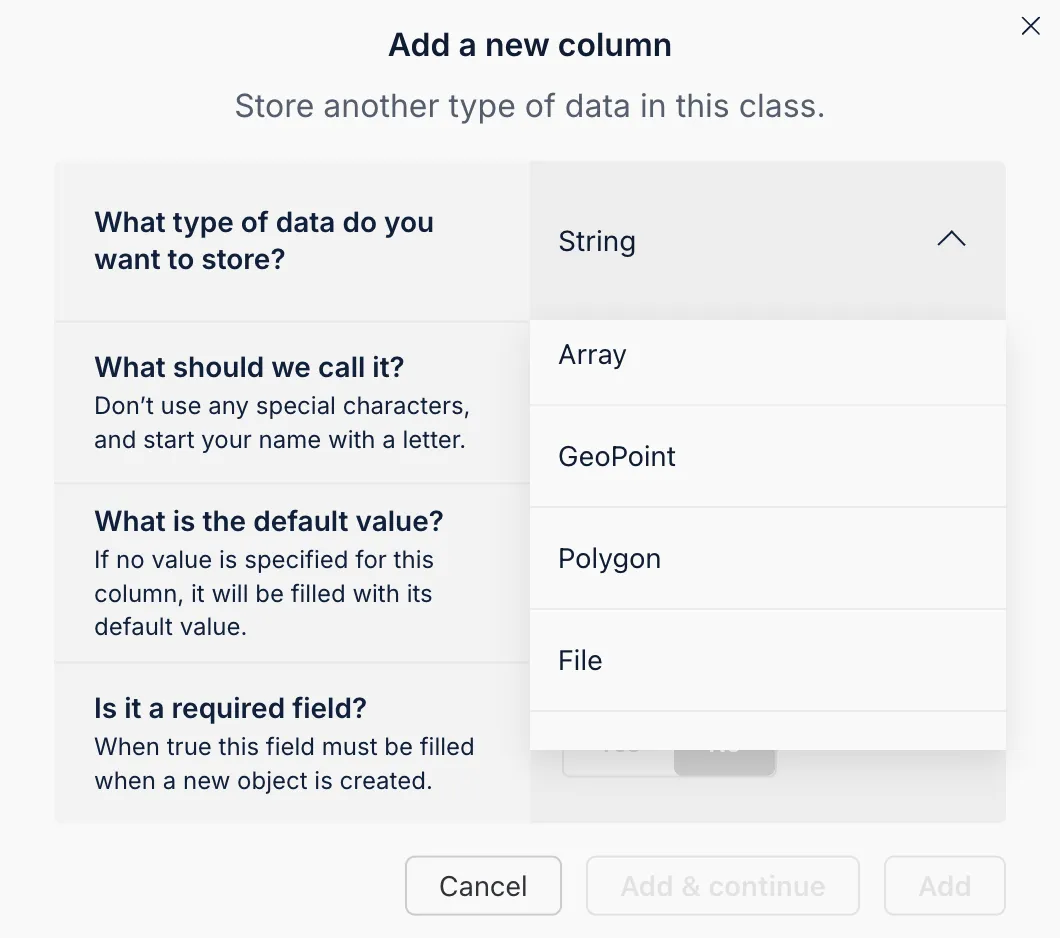
The integrated AI Agent in Back4app can automatically set up your data schema based on a simple description. This tool streamlines the setup process and ensures that your schema is optimized for CRUD operations.
- Open the AI Agent: In your project settings on the Back4app dashboard, find the AI Agent.
- Detail Your Schema Requirements: Provide a clear prompt that outlines the collections and fields you need.
- Review and Confirm: Check the proposed schema and confirm to apply it.
This method saves time and ensures your backend schema is perfectly aligned with your app’s needs.
The Back4app Admin App offers a no-code environment for managing your backend data. With its drag-and-drop interface, you can easily perform operations like adding, editing, and deleting records.
- Go to the “More” menu in your Back4app dashboard.
- Select “Admin App” and then click on “Enable Admin App.”
- Set up your admin account by following the prompts to establish your credentials. This process will also set up roles (like B4aAdminUser) and other system configurations.
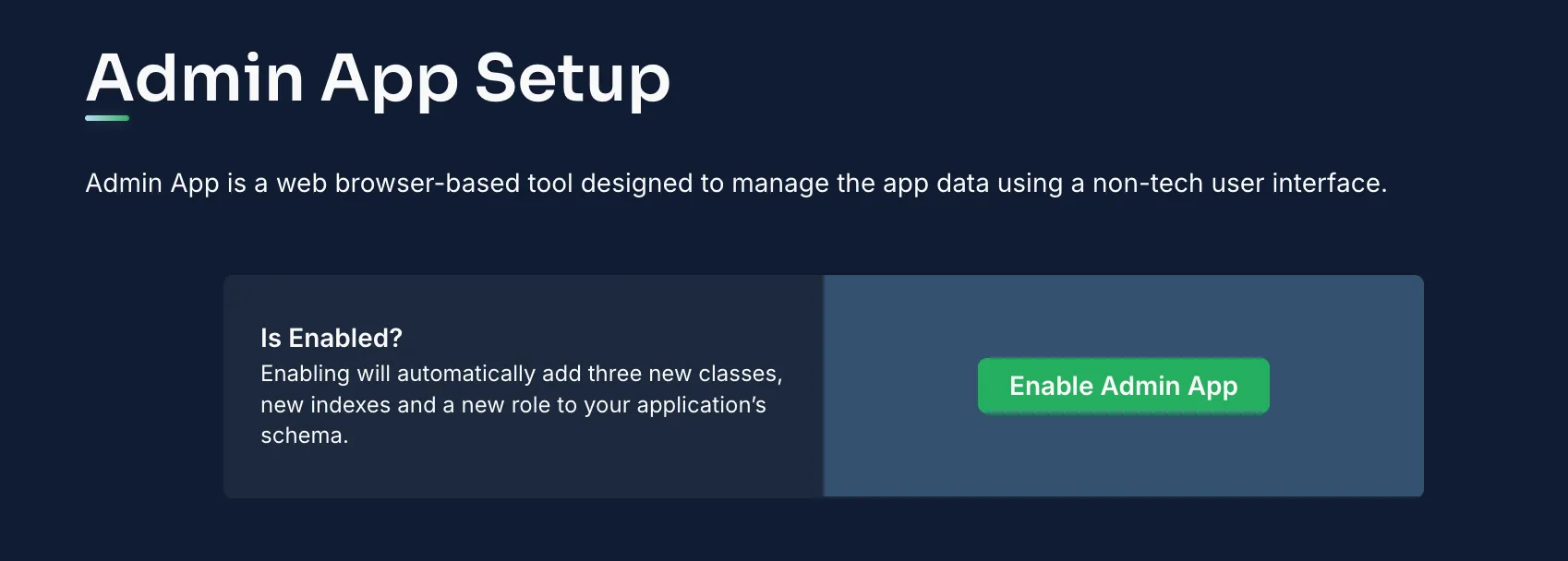
Once enabled, log in to the Admin App to manage your project’s data effectively.
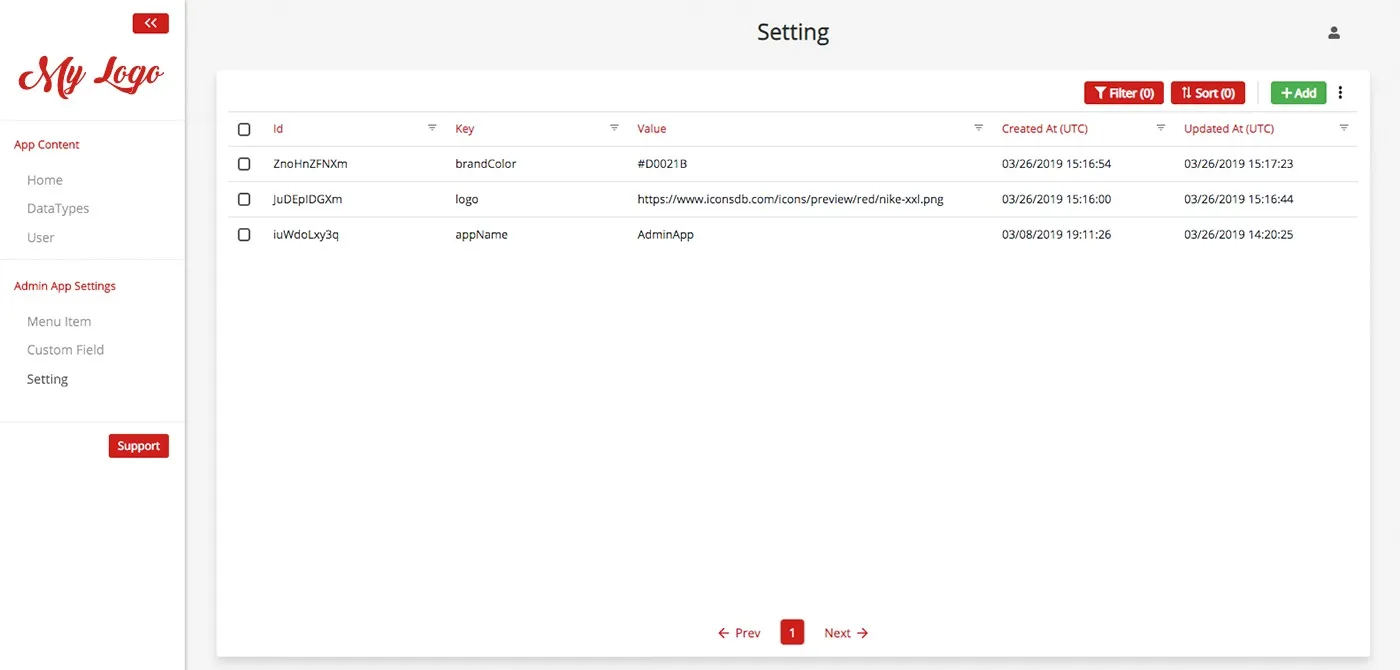
- Insert New Records: Use the “Add Record” feature in a collection (like Items) to introduce new data.
- Examine or Edit Records: Click on a record to view its details or modify its fields.
- Delete Records: Remove outdated or unnecessary data entries.
This intuitive interface makes managing your backend data straightforward and efficient.
Now that your backend is set up, it’s time to link your Svelte application to Back4app.
Install the SDK: Use npm or yarn to install the Parse JavaScript SDK:
Bash1npm install parseInitialize Parse in Your Svelte App: In your main JavaScript file (e.g., src/main.js), initialize Parse:
JS1// src/main.js 2import Parse from 'parse'; 3 4Parse.initialize("YOUR_APPLICATION_ID", "YOUR_JAVASCRIPT_KEY"); 5Parse.serverURL = 'https://parseapi.back4app.com'; 6 7// Your Svelte app initialization code follows...Implement CRUD Functions: Create a module (for example, src/services/items.js) to handle CRUD operations:
JS1// src/services/items.js 2import Parse from 'parse'; 3 4export async function fetchItems() { 5 const query = new Parse.Query("Items"); 6 try { 7 const results = await query.find(); 8 return results; 9 } catch (error) { 10 console.error("Error fetching items:", error); 11 return []; 12 } 13} 14 15export async function addItem(title, description) { 16 const Item = Parse.Object.extend("Items"); 17 const item = new Item(); 18 item.set("title", title); 19 item.set("description", description); 20 21 try { 22 await item.save(); 23 console.log("Item successfully created!"); 24 } catch (error) { 25 console.error("Error creating item:", error); 26 } 27} 28 29export async function updateItem(objectId, newTitle, newDescription) { 30 const query = new Parse.Query("Items"); 31 try { 32 const item = await query.get(objectId); 33 item.set("title", newTitle); 34 item.set("description", newDescription); 35 await item.save(); 36 console.log("Item updated successfully!"); 37 } catch (error) { 38 console.error("Error updating item:", error); 39 } 40} 41 42export async function removeItem(objectId) { 43 const query = new Parse.Query("Items"); 44 try { 45 const item = await query.get(objectId); 46 await item.destroy(); 47 console.log("Item deleted successfully!"); 48 } catch (error) { 49 console.error("Error deleting item:", error); 50 } 51}
If the Parse SDK is not ideal for your use case, you can directly invoke Back4app’s REST or GraphQL endpoints. For instance, to retrieve items via REST:
Integrate these API calls within your Svelte components as needed.
Enhance the security of your data by setting up ACLs on your objects. For example, to create an item visible only to its owner:
Configure CLPs directly in your Back4app dashboard to restrict access so that only authenticated users can interact with certain collections.
Back4app leverages Parse’s built-in User collection for managing authentication. In your Svelte app, implement registration and login functions similar to the examples below:
This approach can be extended to manage sessions, password resets, and additional authentication features.
Back4app simplifies the deployment process. You can deploy your Svelte app using several methods, including Docker containerization.
Compile Your App: Run your Svelte build command, typically:
Bash1npm run build- Review the Build: Ensure that the generated files (usually in the public or build folder) include all necessary assets.
A typical Svelte project structure might look like:
If you prefer containerized deployment, create a Dockerfile in your project’s root:
- Link Your GitHub Repository: Host your Svelte project on GitHub.
- Set Up Deployment in Back4app: In the Back4app dashboard, choose the Web Deployment option, connect your repository (e.g., Basic-CRUD-App-Svelte), and select your target branch.
- Define Build Settings: Specify your build command (like npm run build) and point to the build output directory.
- Deploy Your Application: Click Deploy and monitor the logs until your app is live.
Congratulations! You have built a Svelte-based CRUD application that connects to Back4app.
You set up a project named Basic-CRUD-App-Svelte, configured collections for Items and Users, and managed your data through the Back4app Admin App.
You then integrated your Svelte frontend using the Parse JavaScript SDK (or REST/GraphQL) and added robust security measures.
What’s Next?
- Expand Functionality: Add features like advanced search, detailed views, or real-time updates.
- Enhance Backend Logic: Experiment with cloud functions, third-party API integrations, or role-based access control.
- Deepen Your Learning: Explore further tutorials and the Back4app documentation to optimize your app.
Happy coding and enjoy building your Svelte CRUD application!
